Few of us ever pause to consider the amount of water that runs down our drains. What if you could put that water to better use? And I guess that most of us would like to do that, but think it’s difficult or too much of a hassle. But what if it was really easy? This article will show you a few really practical ways of collecting and storing gray water.
But what can you use gray water for? I use it to flush my toilets and water plants. Lightly soiled gray water is also quite good for fruit or similar trees as it’s more nutrient-rich than clean water. Just be sure not to irrigate food-bearing plants with water too high in bacteria.
See below my “starter kit” for collecting gray water.
I use a variety of bowls, buckets, and plastic yogurt containers.
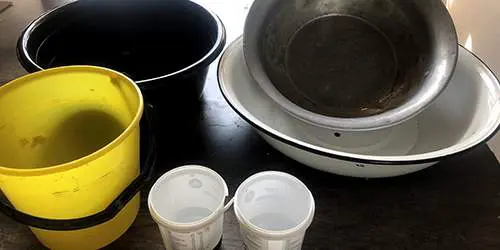
I will discuss a few specific options and thereafter you will be able to easily figure out what will work best for you.
Hand Washing
Washing hands present an opportunity to collect around 600ml of gray water per handwash. If you and your partner each wash hands 5 times per day, you have enough gray water to flush your toilet once or keep a small tree growing.
Fill a 1-liter yogurt container halfway with water. Wet your hands in the water, soap, wash, and rinse off in the yogurt container. Once done, pour into a 5-liter bucket you keep standing in your bathroom. Once the bucket is full, you just use that to flush your toilet.
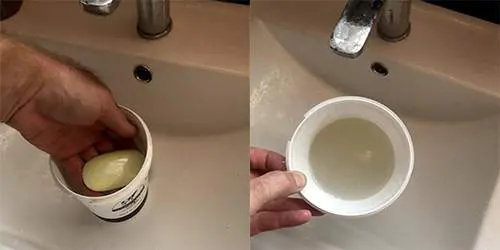
Showering
When I shower, I put one of my large bowls down on the shower floor. I then stand in the bowl and open the shower tap and wet my body. This overflowing water ends up in the bowl you are standing in.
Once wet, I soap myself and get the washing done. Then, using a yogurt container, I rinse myself ensuring that the water ends up in the bowl. I can then decant the leftover water into the bucket where the handwash water is going to keep my toilet flushing.
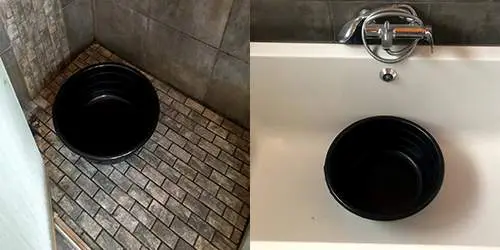
Washing Clothes
Washing machines use quite a bit of water. So when I wash clothes, I use a 60Lt drum to catch the gray water. It’s difficult to move 60Lts of water as it weighs 60kg’s, so what I do is pour the water over into a bucket, using a jug.
From here you can use the water to flush toilets or pour into your garden.
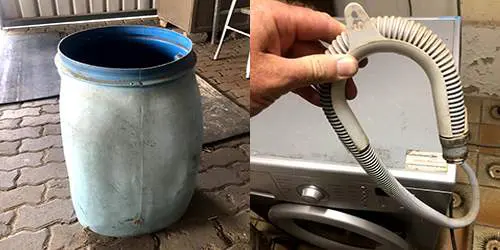
Storage
I use a 500 Lt water tank to store gray water. I have also attached some fittings to fill either bucket or let it run through a garden hose.
In the picture, you will see a small stool on which I can place a bucket to fill, or stand on when manually filling the tank.
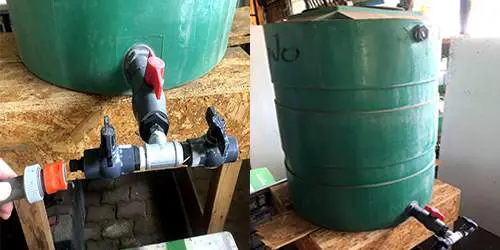
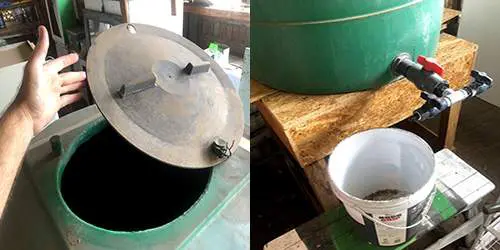
Dishwashing Water
Once I am done washing dishes, I let the water stand for a few minutes so that all solids can drift to the bottom, and then I use a jug to decant from the basin into a bucket. This goes fast. You use about 10 Lt’s of water for dishwashing, so a 1,5 Lts jug will empty a basin in about five to seven scoops
This water is also ideal for the garden but due to fatty residue, I don’t recommend using it to flush toilets.
Drainage Pipes
If possible, you can position a bucket beneath drainage pipes to catch your leftover dishwashing water or any water for that matter.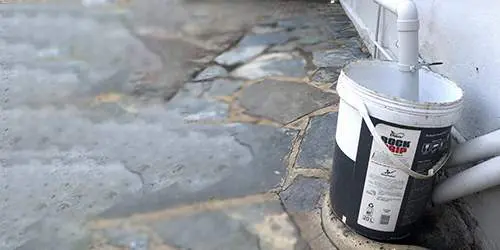
General Observations
Keep your buckets and bowls clean to limit bacterial growth. Leave them out in the sun as much as possible as the UV kills bacteria.
Watch where you pour water with a lot of oily fatty residue, as this will accumulate in the soil. Try to spread it out over as large an area as possible.
The benefit of using a tank is the oils and fats rise to the top, and most water coming out the bottom is relatively fat-free.
So there you have it, folks. Simple and practical ways to capture gray water and use it to flush toilets or irrigate plants. Not only will you be helping the environment but you will ensure that a relatively scarce resource is utilized more efficiently.
You may also like:
The Best Places In America To Start Your Homestead
What Happens If You Pour Honey Over Meat (Video)
Backyard Projects That Might Get You Arrested
How To Secure Your Homestead Against Intruders

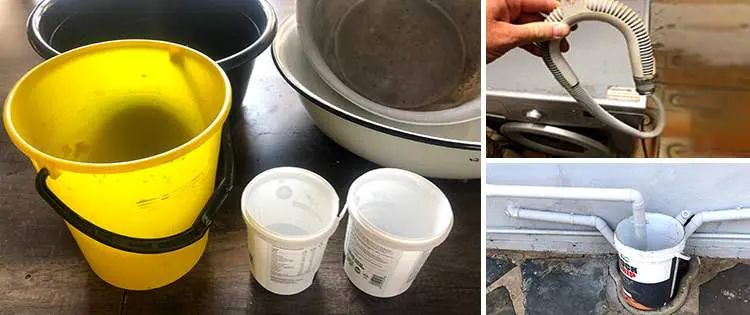













awesome i need directions for the loom, esecially